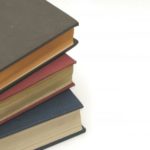
Bibliography: Biography/Philosophy
Updated January 24, 2019
Abramson, R. M. & Reiser, J. (1994). Music as a second language. New York, NY: Music & Movement Press.
Abramson, R. M., Chosky, L., Gillespie, A. E., Woods, D., York, F. (2000). Teaching music in the twenty-first century. New Jersey: Prentice Hall.
Bachmann, M. (1991). Dalcroze today: An education through and into music. Translated by D. Parlett. New York: Oxford University Press.
Becknell, A. (1970). A history of the development of Dalcroze eurhythmics in the United States and its influence on the public school music program. Ph. D. dissertation, University of Michigan, Michigan. Dissertations & Theses: A&I. (Publication No. AAT 7104546).
Bowman, W. & Powell, K. (2007). The body in a state of music. In L. Besler (Ed.), The Handbook of Research in Arts Education, (p. 1087-1106). Springer: Dordrecht, The Netherlands.
Frego, R. J. D. & Leck H. H. (2005). Creating artistry through movement: Dalcroze Eurhythmics in the choral setting [DVD]. Milwaukee, WI: Hal Leonard.
Jaques-Dalcroze, E. (1920). The Jaques-Dalcroze method of eurhythmics; Rhythmic movement. New York: The H.W. Gray Co.
Jaques-Dalcroze, E. (1924). The technique of moving plastic. The Musical Quarterly 10(1), 21-38.
Jaques-Dalcroze, E. (1930). Eurhythmics, art and education. Translated by F. Rothwell. London: Chatto & Windus.
Jaques-Dalcroze, E. (1930b). Eurhythmics and its implications. Translated by F. Rothwell. The Musical Quarterly 16(3), 358.
Jaques-Dalcroze, E. (1930c). Remarks on arrhythmy. Music and Letters 14(2), 138-148.
Jaques-Dalcroze, E. (2000). Rhythm, music, and education, 5th ed. Translated by H. F. Rubenstien. London: The Dalcroze Society, Inc.
Juntunen, M., & Westerlund, H. (2001). Digging Dalcroze, or, dissolving the mind-body dualism: Philosophy and practical remarks on the musical body in action. Music Education Research 3, 203-214.
Landis, B. & Carder, P. (1972). The eclectic curriculum in American music education: Contributions of Dalcroze, Kodaly and Orff. Washington, D.C.: Menc.
Lee, J. W. (2003). Dalcroze by any other name: Eurhythmics in early modern theatre and dance. Ph.D. dissertation, Texas Tech University, Texas. Dissertations & Theses: A&I. (Publication No. AAT 3095988).
Lussy, Mathis (1885). Musical expression. London: Novello, Ewer, and Co. transl. M. E. Glehn.
Nalbandian, M. R. (1994). Application of the Dalcroze philosophy of music education to the music major piano class. D.M.A. dissertation, University of Washington, Washington. Dissertations & Theses: A&I. (Publication No. AAT 9509385).
Revkin, L. K. (1984). An historical and philosophical inquiry into the development of Dalcroze eurhythmics and its influence on music education in the French cantons of Switzerland. Ph.D. dissertation, Northwestern University, Illinois. Dissertations & Theses: A&I. (Publication No. AAT 303313106).
Sadler, Michael E. (1915). Introduction to the eurhythmics of Emile-Jaques Dalcroze. Boston: Small Maynard and Company.
Southcott, J. (2007). Dalcroze eurhythmics from a distance: A miscellany of current research. Australia: Heather Gell Dalcroze Foundation.
Spector, I. (1990). Rhythm and life: The work of Emile Jaques-Dalcroze. Stuyvesant, NY: Pendragon Press.
Steinitz, T. (1988). Teaching music in rhythmic lessons: theory and practice of the Dalcroze method. Tel-Aviv: Or-Tav Music Publications.
Wax, E. (1973). Dalcroze dimensions. Roslyn, NY: Mostly Movement Ltd.
Williams, J. F. (1995). A philosophical inquiry into the education theories of Jaques-Dalcroze and Kodaly. Ed.D. dissertation, Oklahoma State University, Oklahoma. Dissertations & Theses: A&I. (Publication No. AAT 9608943).